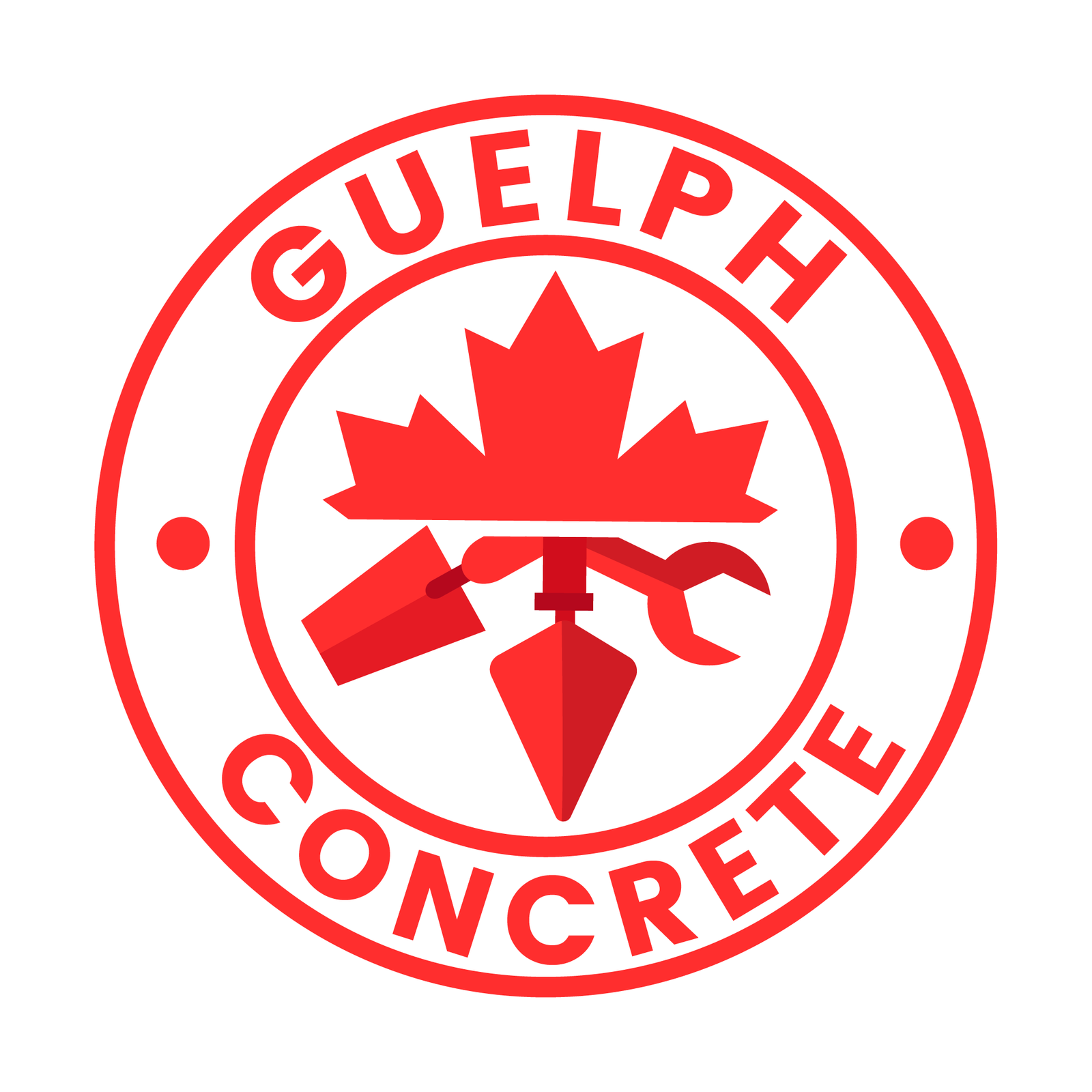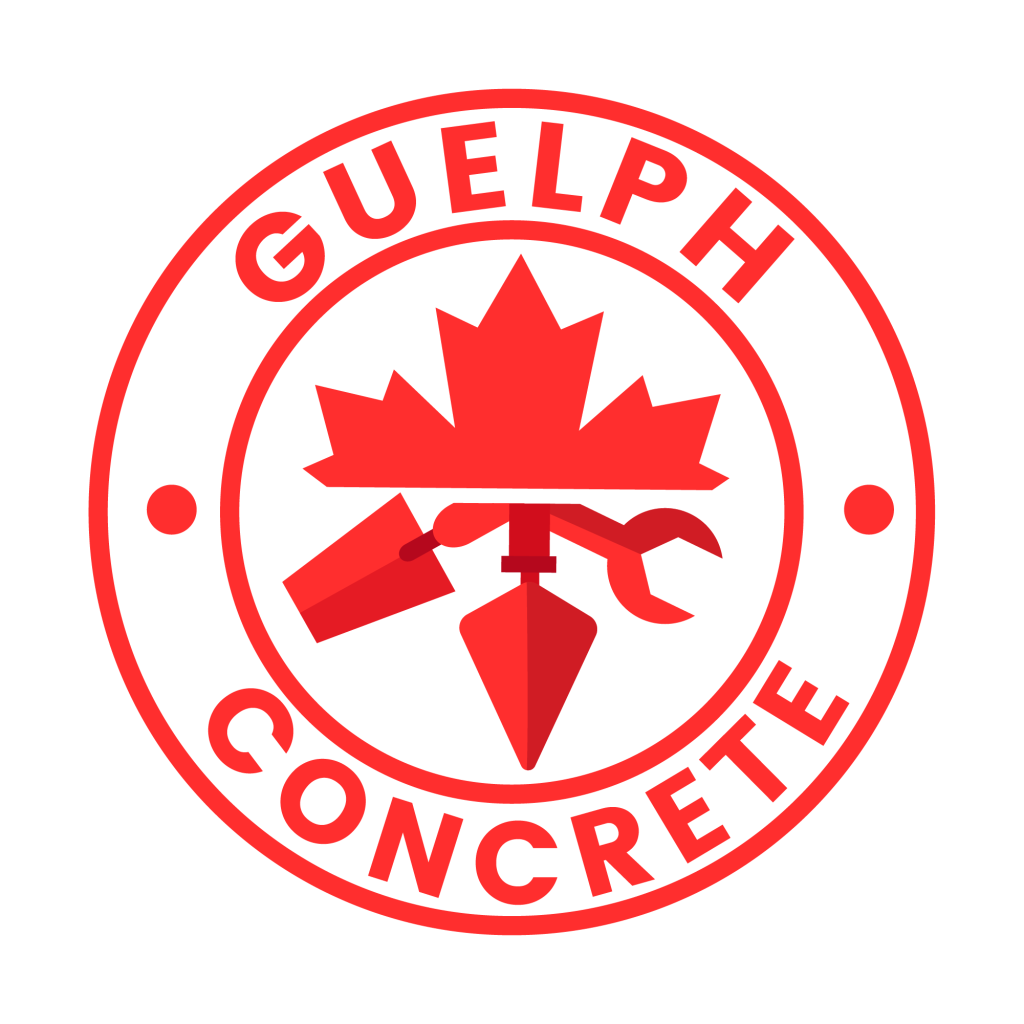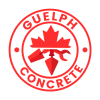Waterproofing foundation walls from the outside is essential in Guelph, Ontario to prevent water infiltration and structural damage. At Guelph Concrete LTD, with over 15 years of experience, we specialize in providing top-tier waterproofing solutions.
First, we’ll inspect the foundation for cracks and water seepage. Next, we’ll identify water entry points, ensuring proper drainage around the foundation.
Excavation follows, reaching down to the footing level. We’ll then apply a high-quality waterproofing membrane like Bakor WP200, ensuring a seamless barrier. Installing a weeping tile system will redirect water away effectively.
Finally, we’ll backfill and compact the soil. Regular maintenance is key to longevity.
For a free estimate, contact Guelph Concrete LTD today at 548-490-2074. Let us help you protect your home from water damage.
Importance of Exterior Waterproofing
Exterior waterproofing is necessary in Guelph to prevent water from infiltrating foundation walls and causing structural damage. By choosing exterior waterproofing, we safeguard our homes from the outside, addressing water issues at their source. This method provides significant waterproofing benefits, including the improvement of structural integrity and the prevention of costly repairs in the future.
When discussing waterproofing benefits, it’s important to emphasize that exterior waterproofing, although generally more expensive upfront compared to interior methods, offers a long-term solution. Products like Bakor WP200 waterproofing membrane and Bakor WP 2000 water drainage and protection board are highly effective. These products come with a manufacturer’s warranty, guaranteeing that our foundation walls remain protected for years.
In contrast, interior waterproofing methods might seem more cost-effective initially but often only treat the symptoms rather than the underlying cause. Exterior waterproofing, however, involves applying a protective barrier directly to the foundation’s exterior, stopping water from entering in the first place. This proactive approach helps us avoid the frequent maintenance typically associated with interior solutions.
In Guelph, protecting our homes with proper exterior waterproofing ensures that we’re maintaining the value and safety of our properties, promoting a sense of community and shared responsibility.
Assessing Your Foundation
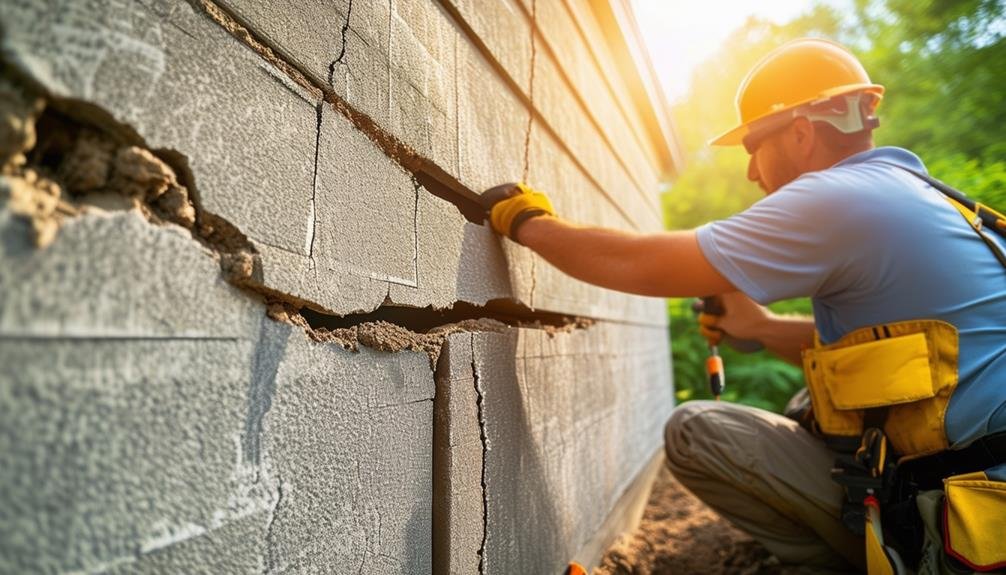
Assessing Your Foundation with Guelph Concrete LTD
At Guelph Concrete LTD, with over 15 years of experience in the industry, we understand the importance of a solid foundation. To ensure your foundation is in top condition, we recommend starting with a thorough inspection for visible signs of water damage, such as cracks or leaks. Additionally, evaluating potential water entry points and the overall state of the foundation material is crucial.
Consulting with our professional team of waterproofing experts in Guelph will help you determine the specific waterproofing needs of your foundation walls.
Don’t wait until minor issues become major problems. Contact Guelph Concrete LTD today for a free estimate at 548-490-2074. Let’s help you protect your home with our expert services.
Identifying Foundation Problems
When evaluating your foundation, we’ll need to look for signs like cracks, bulging walls, or water seepage that indicate potential problems. By conducting a thorough foundation inspection, we can identify these issues early and address them before they worsen. Here are key signs to watch for:
- Cracks: Look for vertical, horizontal, or diagonal cracks in the walls or floor. These can signal shifting or settling that might require immediate attention.
- Water Infiltration Indicators: Check for mold growth, musty odors, or damp spots. These often point to water entering your foundation, which can lead to serious structural issues.
- Bulging Walls: If you notice any walls bowing inward, it can indicate pressure from outside soil, requiring professional assessment.
Identifying these signs is essential for determining the extent of any damage and whether exterior waterproofing is necessary.
Additionally, spotting water infiltration indicators like mold helps us understand the moisture levels affecting your foundation. Addressing these problems promptly prevents further deterioration and maintains the integrity of our homes.
Evaluating Water Entry Points
Let’s kick off our evaluation by pinpointing areas where water might be sneaking into the foundation walls. The first step is a thorough exterior examination. By looking closely at the foundation walls, we can identify signs of water infiltration such as dampness, mold, or efflorescence. These indicators often point to underlying issues that need immediate attention.
Next, we should check for cracks, gaps, or deteriorating areas in the exterior foundation walls. These imperfections are common entry points for water and can lead to significant damage if not addressed promptly.
It’s also essential to evaluate the grading around the foundation. Proper grading ensures that water is directed away from the walls, preventing pooling and seepage that can compromise the foundation’s integrity.
We can’t overlook the significance of inspecting downspouts and gutters. These systems should be functioning correctly and positioned to direct water away from the foundation. Clogged or misaligned gutters can result in water accumulation near the walls, exacerbating infiltration issues.
Lastly, professional consultation can provide a detailed assessment of water entry points. Experts can offer tailored recommendations for effective exterior waterproofing solutions, guaranteeing our foundation remains dry and secure.
Determining Waterproofing Needs
Assessing our foundation’s waterproofing needs begins with examining its current condition for signs of water seepage, such as cracks, moisture, or mold. We must search for any structural issues like movement or sinking that could impact the efficiency of external protection. The age and material of our foundation walls also play a vital role in choosing the most appropriate waterproofing solutions. For long-term protection, it’s crucial to select methods tailored to the specific state and composition of our foundation.
Moreover, we should assess the surrounding terrain, taking into account factors like slope, drainage, and proximity to water sources. These elements can greatly impact the success of our external waterproofing endeavors. To guarantee a comprehensive and precise evaluation, seeking advice from a professional waterproofing company in Guelph is highly recommended. They can offer expert insights and suggest the most suitable solutions for our particular requirements.
Here’s a brief checklist to assist with our evaluation:
- Examine for Water Seepage: Identify cracks, moisture, or mold.
- Inspect Structural Soundness: Look for indications of movement or sinking.
- Assess Surrounding Terrain: Consider slope, drainage, and nearby water sources.
Choosing Waterproofing Materials

Selecting the right waterproofing materials is vital for protecting foundation walls from water intrusion in Guelph. The effectiveness of our waterproofing efforts depends on the quality of materials we choose. Bakor WP200 waterproofing membrane is highly recommended for small exterior foundation projects due to its proven reliability and the added benefit of a manufacturer’s warranty. Complementing this with the Bakor WP 2000 water drainage and protection board enhances the overall waterproofing system.
When evaluating waterproofing benefits and cost comparison, it’s important to weigh the long-term savings against initial expenditure. Investing in high-quality materials can prevent costly repairs down the road. Here’s a quick comparison to help with that:
| Aspect | DIY Installation | Professional Installation |
|---|---|---|
| Material Cost | Lower | Higher |
| Installation Cost | Minimal | Substantial |
| Waterproofing Benefits | Varies with skill level | Consistent and reliable |
| Time Required | Longer | Faster |
| Warranty and Durability | Limited (depends on skill) | Manufacturer-backed and professionally certified |
Choosing between DIY vs professional installation depends on our comfort with handling these materials and the scope of our project. While DIY might save initial costs, professional installation ensures long-lasting protection and peace of mind.
Digging and Excavation Process
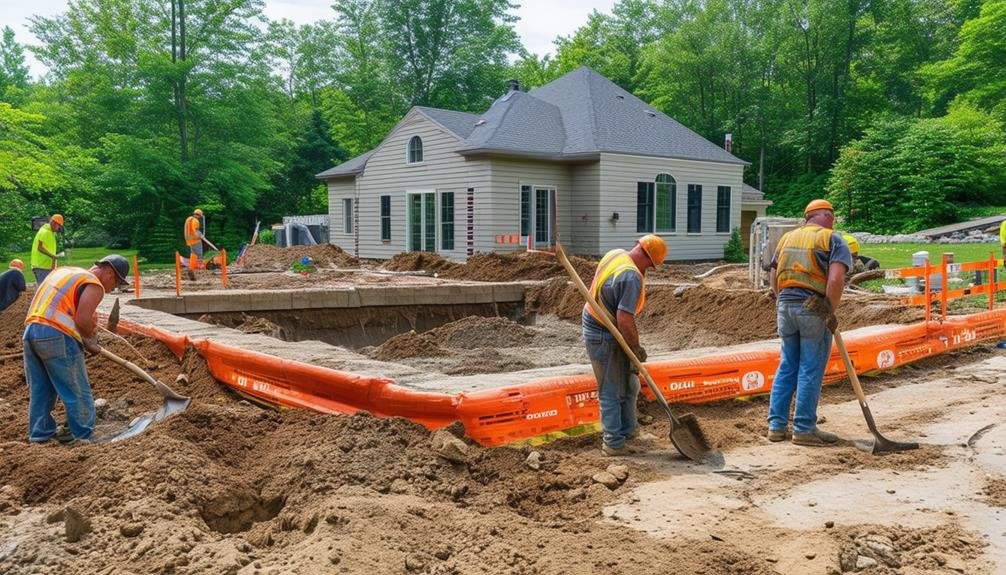
Digging and excavation are necessary steps in waterproofing foundation walls, requiring precise techniques to guarantee thorough and effective coverage. In Guelph, Ontario, this process involves excavating around the foundation walls to a depth typically ranging from 6 to 8 feet. We must carefully plan our equipment selection and excavation techniques to ensure the process goes smoothly and effectively.
Here’s a concise breakdown of our approach:
- Equipment Selection: Choosing the right machinery is vital. We use specialized equipment designed for precise digging, which helps us access the foundation walls without causing unnecessary disruption.
- Excavation Techniques: Skilled technicians employ specific methods to ensure the soil around the foundation is excavated properly. This is important for exposing the walls fully so we can apply waterproofing membranes and drainage systems effectively.
- Safety Precautions and Soil Disposal: Safety is paramount. We implement rigorous safety precautions to protect our workers and the property. Additionally, managing soil disposal efficiently ensures that the site remains clean and environmentally compliant.
Applying Waterproofing Membrane
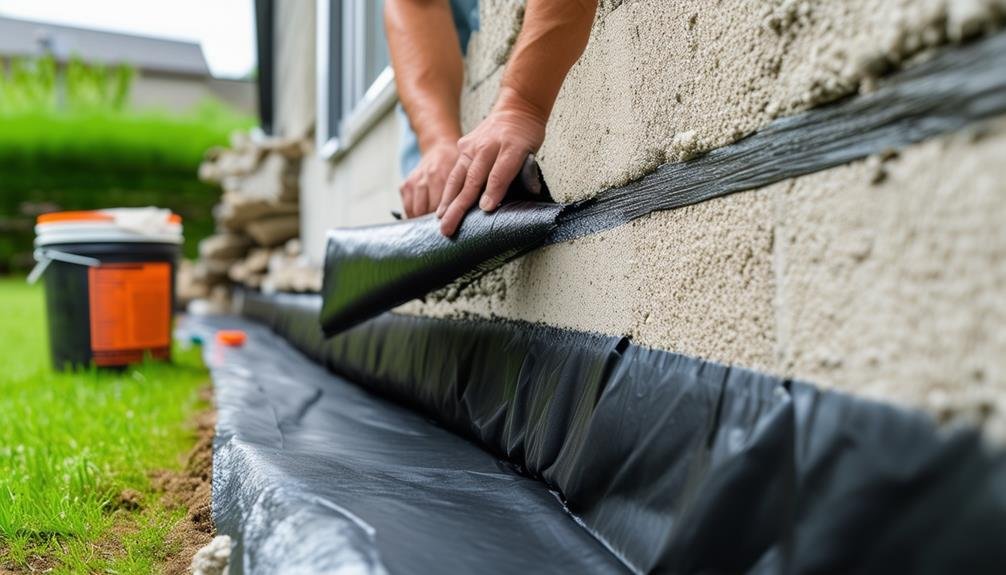
Applying a waterproofing membrane like Bakor WP200 to foundation walls in Guelph creates a sturdy barrier against water intrusion, guaranteeing long-lasting protection. This membrane application is one of the most effective waterproofing techniques available, providing homeowners with peace of mind and reliable defense against moisture issues.
To start, we clean and prepare the foundation walls for the membrane application. Ensuring a smooth, debris-free surface is essential for optimal adhesion.
Next, we apply the Bakor WP200 membrane uniformly, covering every inch of the foundation wall. This thorough application forms a continuous, seamless barrier that’s highly resistant to water penetration.
One of the significant benefits of using a waterproofing membrane like Bakor WP200 is the manufacturer’s warranty, which assures us of the product’s durability and effectiveness. This warranty adds an extra layer of confidence, knowing that our foundation walls are protected for years to come.
Regular maintenance checks are essential to guarantee the membrane remains intact and functional. By incorporating these waterproofing techniques, we not only enhance the longevity of our foundation but also foster a sense of community security, knowing our homes are safeguarded against water damage.
Installing Drainage Systems
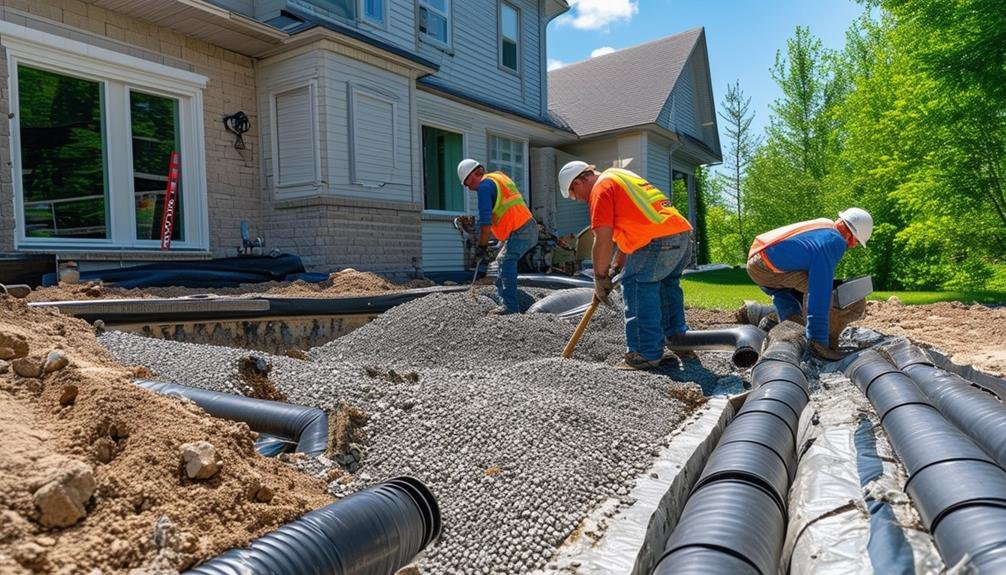
At Guelph Concrete LTD, we understand the importance of installing drainage systems to keep your foundation walls dry and secure. With over 15 years of experience serving the Guelph, Ontario community, we specialize in ensuring that your home’s foundation remains stable and free from water damage.
Weeping tiles are essential for collecting and redirecting water away from the foundation, and connecting them to a sump pit guarantees efficient water management.
Proper installation of these components is crucial for preventing water damage and maintaining a stable foundation in Guelph homes. Trust the experts at Guelph Concrete LTD to get the job done right.
Contact us today for a free estimate at 548-490-2074. Let’s help you protect your home and give you peace of mind.
Weeping Tile Installation
Installing weeping tiles around the foundation footing is necessary for effective water management and preventing basement leaks in Guelph homes. The weeping tile benefits are numerous; they collect and divert water away from the foundation, reducing hydrostatic pressure and preventing water seepage into basements.
The installation process involves excavating around the home’s perimeter to lay the tiles, typically connecting them to a sewer or sump pit for efficient drainage.
The advantages of exterior waterproofing can’t be overstated. By addressing the issue from the outside, we prevent water from even reaching the interior walls, markedly reducing the risk of basement flooding and mold growth.
However, cost considerations are important, as exterior solutions can be more expensive due to the extensive excavation work required. Despite the cost, the long-term benefits of a dry, secure foundation often outweigh the investment.
Here’s a simple breakdown of the weeping tile installation process:
- Excavation: Digging around the home’s foundation to the footing level.
- Tile Placement: Laying the weeping tiles and connecting them to a sump pit or sewer.
- Backfilling: Covering the tiles with gravel and soil for proper drainage.
In Guelph, ensuring our weeping tiles are functioning correctly is crucial, and we can always rely on high water pressure contractors to clear any blockages.
Sump Pit Connection
Connecting weeping tiles to a sump pit is necessary for effective drainage and preventing water accumulation around the foundation. In Guelph, many new homes come equipped with sump pits and pumps, which are integral parts of a complete drainage system. These systems work together to collect and redirect water away from the foundation, ensuring a dry and secure home environment.
After the exterior waterproofing process, we inspect the weeping tiles to confirm they’re functioning properly. Any blockages in the weeping tiles can be cleared by a high water pressure contractor, ensuring ideal water management. Proper sump pump installation is essential; without it, the drainage system may fail, leading to potential water damage.
Routine sump pump maintenance is also important. Regular checks and timely replacements can prevent malfunctions that might compromise the entire drainage system. In Guelph’s climate, where heavy rainfall can be common, ensuring that our sump pit connection is strong and reliable is key to maintaining a dry foundation.
Backfilling and Compaction
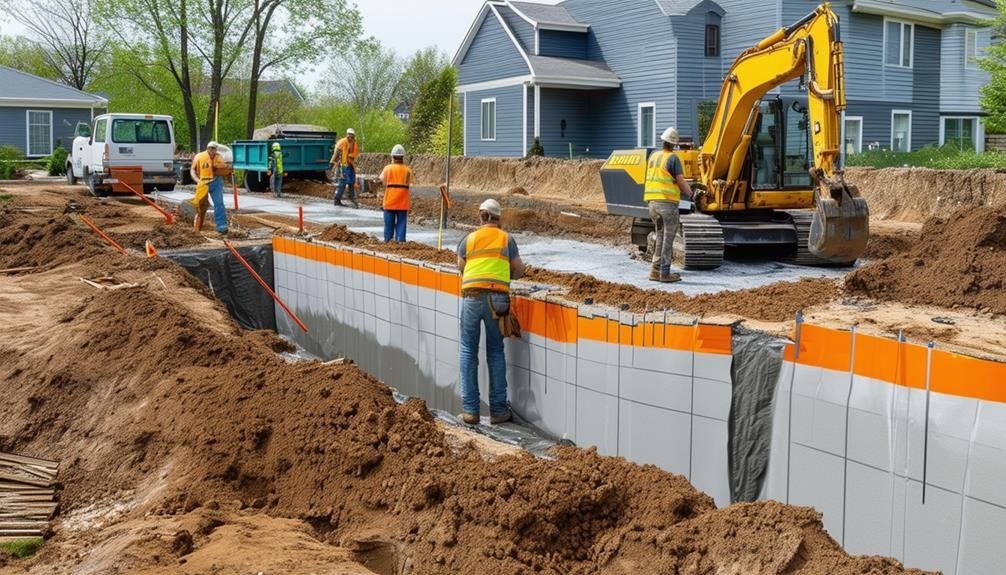
Proper backfilling and compaction are fundamental steps in guaranteeing the longevity and waterproofing of foundation walls.
We’ve seen that using the right materials, like gravel or crushed stone, promotes proper drainage away from the foundation walls, which is essential in preventing water seepage. Additionally, the compaction of the backfilled soil is critical to avoid settling, which can lead to water pooling against the foundation and ultimately compromising its integrity.
When we approach backfilling and compaction, we need to follow these key steps:
- Select high-quality backfill materials: Using gravel or crushed stone aids in proper drainage, directing water away from the foundation.
- Layer and compact the soil: As we backfill, it’s essential to compact the soil in layers to prevent soil movement and maintain stability.
- Monitor for settling: Periodically checking for any settling or shifts can help us address issues before they become major problems.
Maintenance Tips
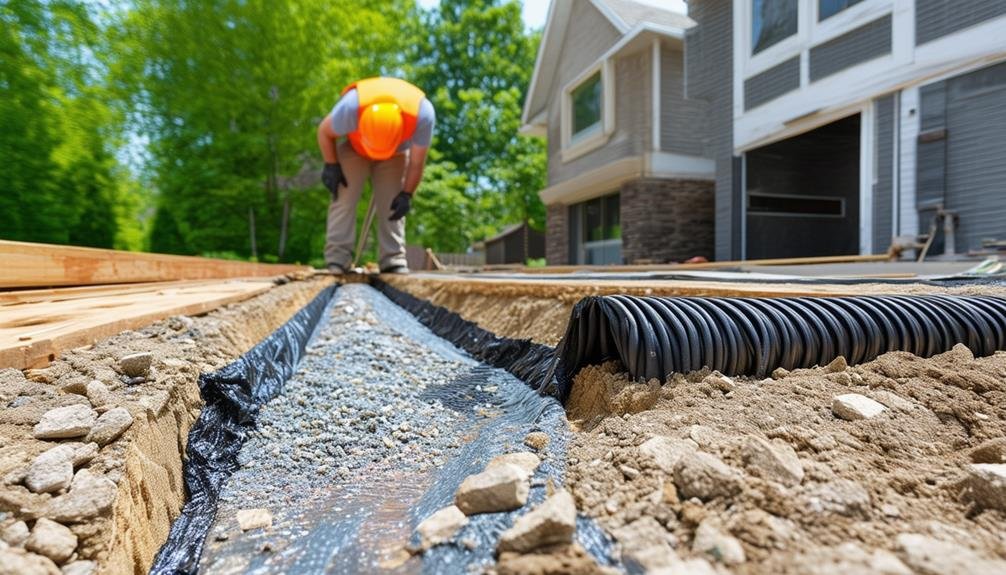
Once we’ve ensured proper backfilling and compaction, we must focus on regular maintenance to keep foundation walls in Guelph waterproof and in good condition. Regular inspections are vital. We should examine the exterior foundation walls for cracks, leaks, and signs of water penetration. Addressing these issues early can prevent more substantial problems down the line.
Proper grading around the foundation is necessary. We need to confirm the ground slopes away from the walls to direct water away and prevent pooling. This is one of the most effective drainage solutions to avoid water damage.
Cleaning gutters and downspouts regularly is another key task. When these are clogged, water can overflow and seep into the foundation walls. Installing gutter guards can help reduce maintenance efforts.
Applying a waterproofing membrane or coating to the exterior walls is a smart move for added protection against moisture. These foundation sealing techniques create an extra barrier, greatly reducing the risk of water infiltration.
Lastly, we should trim vegetation and bushes near the foundation. Overgrown plants can hold moisture against the walls, leading to potential damage. Keeping the area around the foundation clear will help maintain its integrity and longevity.
Frequently Asked Questions
How Do I Waterproof My Foundation Walls From Outside?
To waterproof our foundation walls from outside, we start with the excavation process. Then, we apply Bakor WP200 for small projects or WP 2000 for larger ones, ensuring effective drainage solutions and long-lasting protection against water damage.
What Is the Best Waterproofing for Exterior Foundation Walls?
We recommend exterior waterproofing methods, specifically using ideal waterproofing materials like Bakor WP200 membrane and Bakor WP 2000 board. These products offer reliable protection, ensuring our homes remain dry, safe, and structurally sound.
How Do You Fix a Foundation Leak From the Outside?
To fix a foundation leak from the outside, we start with the excavation process, then apply Bakor WP200 waterproofing membrane. Next, we add drainage solutions like Bakor WP 2000 water drainage and protection board for thorough protection.
Should Basement Walls Be Waterproofed Inside or Outside?
In deciding between interior vs exterior waterproofing, weighing the benefits and costs is crucial. Exterior waterproofing generally offers better protection and long-term solutions, though it can be pricier compared to interior methods.
Conclusion
Simply put, waterproofing foundation walls from the outside is crucial to avoid water damage and uphold a dry, healthy household in Guelph. Through thorough evaluation of the foundation, selecting appropriate materials, and adhering to correct processes, we can construct a strong defense against moisture.
Keep in mind, the critical aspects lie in the specifics, so don’t cut corners on drainage systems and backfilling. By following these measures, we’ll maintain sturdy foundations and protect our homes from water-related issues.
